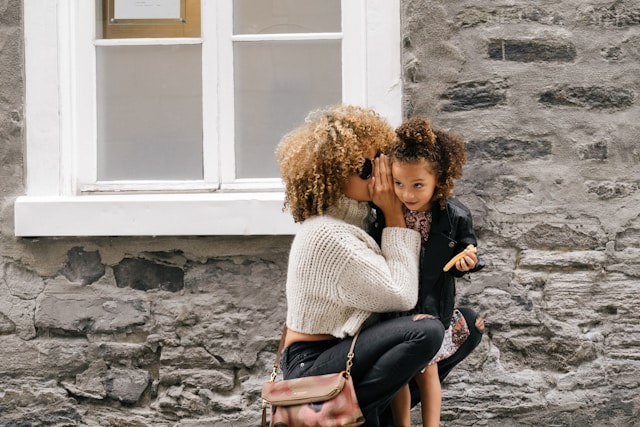Safety is a big concern for parents, considering that children face several risks at home and outside. Besides the conventional hazards like injuries and environmental diseases, there are hidden threats too. Johns Hopkins Medicine highlights the concept of stranger danger to children. Although inappropriate situations and abductions are rare, children should be aware of these threats.
As a parent, you can do your bit by highlighting the risks and preparing your children beforehand. It empowers them to recognize potentially dangerous situations and respond appropriately. Moreover, it makes your kids confident and vigilant about their surroundings at all times.
You may want to know when to start personal safety education and what to teach your kids. In this article, we will share a guide for parents looking to provide personal safety lessons to their children.
Teach the Basics of Stranger Danger
While stranger danger is real, it is often swept under the rug. According to the Alaska Children’s Trust, children are unlikely to report such incidents. The reason is that they are afraid of retaliation, blame, and not being believed. At times, they just lack understanding or are unable to explain the issue.
As a parent, you must explain to your children that they never go anywhere, talk to, or accept gifts from strangers. Additionally, they should be guided to avoid sharing personal information with anyone they don’t know. Also, educate them about age-appropriate threats that your kids may come across.
For example, young girls taking cabs must be aware of threats of commuting. The recent spurt in Uber sexual assault cases is a reason to worry. According to npr.org, many victims have filed claims against Uber because they have been slow to act. Despite their capacity to make rides safer, their actions have been inadequate.
TorHoerman Law notes that Uber faces 3,000 such lawsuits in both state and federal courts. The majority of these have been consolidated into multidistrict litigation. Despite the hope of justice, it is always better to avoid danger in the first place.
Role-playing scenarios are a good idea when explaining the safety essentials to young kids. This will help them practice how to respond assertively and seek help from a trusted adult when necessary.

Establish Emergency Protocols
Children should know how to react in emergencies, including those affecting their safety at home or outside. Parents must establish emergency protocols so that kids know how to address a threatening situation.
If your child is young, ensure they memorize important phone numbers, including yours and a trusted family member’s or friend’s. They should also know the emergency services (like 1098) numbers and understand when to call them.
As a parent, your biggest fear may be about losing your child in a crowded public place. However, such incidents do happen, and preparing your kid to deal with them can be a savior. Instruct them on what steps to take in such situations, such as finding a store clerk or another adult they trust.
Set Clear Internet Safety Rules
A 2024 report stated that the internet is not the safest place for kids. Nearly 2/3 of children participating in the survey stated that they experienced online harm. Moreover, 63% of parents believe spending time online negatively impacts the health of their children. These numbers highlight the threat posed by the Internet to the personal safety of children.
Parents must do their bit to educate their kids regarding defenses against these threats. Start by teaching them never to share personal information online or arrange meetings with people they meet on the internet. Also, discuss the importance of not opening emails or attachments from unknown sources. Educating them about the dangers of cyberbullying is equally important.
Encourage Open Communication
According to UNICEF, the way parents communicate with their children shapes their emotional development. It also affects how they build relationships as they grow up. Helping kids to feel safe discussing their feelings is a way to create a safe environment.
Encourage your child to express fears or concerns without fear of judgment. Also, reassure them that they can talk about anything that makes them uncomfortable. Teach them that they have the right to say “no” if someone makes them uncomfortable. They should also know that they can always come to you for help.
Frequently Asked Questions
What is the right age to start teaching my child about personal safety?
Since children of all ages face threats, there is no specific age to start educating them about personal safety. You should begin as soon as your child can understand basic concepts. Tailor your conversations based on their age and developmental level. You can gradually introduce more complex topics as they grow older.
How can parents make personal safety lessons engaging?
Think beyond casual conversations when teaching your child about personal safety. You can use role-playing games, stories, and interactive discussions to make safety lessons fun and relatable. Incorporating real-life scenarios is a good way to reinforce the lessons in a memorable way. Moreover, it makes them less apprehensive about the potential risks.
What should I do if my child has fears about personal safety?
As a parent, you must address your child’s fear in a positive and proactive way. Listen attentively to their fears and concerns. You must validate their feelings and discuss practical steps they can take to feel safe. This approach will make them confident and reassure them that their feelings are important.
Keeping your children safe is an important aspect of healthy parenting. The best way to do it is not just by protecting them from the risks. Create awareness and empower them to deal with threats rather than being a protective parent. This will give them the confidence and strength to protect themselves even when they don’t have you around.

